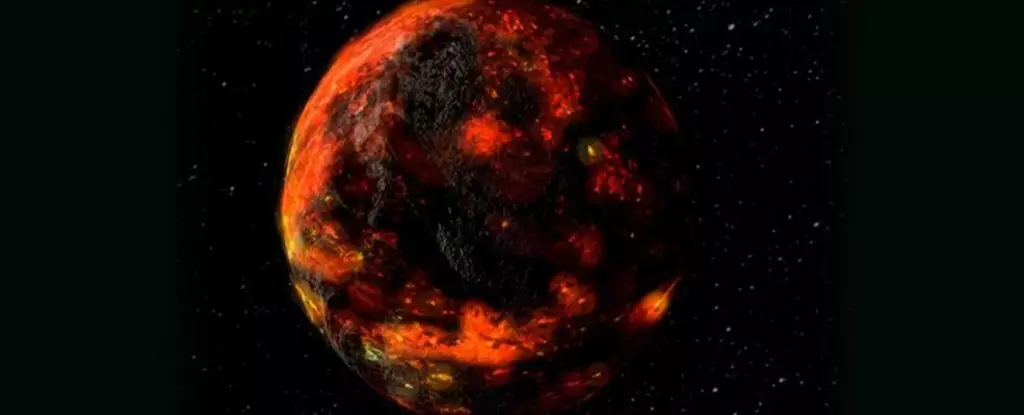The Moon, Earth’s closest celestial companion, has long fascinated scientists and laypeople alike, not only for its beauty but also for its enigmatic past. Despite the substantial knowledge accrued over decades of lunar exploration, there remain many unanswered questions regarding the Moon’s early history. Recent studies, including new measurements of rock samples collected during the historic Apollo missions, are shedding light on the Moon’s formation and evolution, revealing that the Moon solidified approximately 4.43 billion years ago—around the time when Earth was poised to become habitable. This article delves into the findings of University of Chicago scientist Nicolas Dauphas and his research team on the lunar surface’s ancient geological processes and their implications for understanding both the Moon’s history and Earth’s evolution.
Current theories about the Moon’s origin suggest that it was born from a catastrophic collision between the early Earth and a Mars-sized body known as Theia. This massive impact ejected a vast quantity of molten debris into space, which gradually coalesced to form the Moon. Initially, this new celestial body was a hot, liquid sphere—referred to as a molten proto-Moon—before it began the slow process of cooling and crystallization.
As the Moon’s surface temperature dropped, heavy elements sank to form a crust, while lighter ones rose to create a differentiated structure. Through the analysis of the various proportions of elements in the Apollo samples, researchers have identified a distinctive layer of residual liquid known as KREEP, comprising potassium, rare earth elements, and phosphorus. This unique composition not only serves as a key to understanding the Moon’s geochemical evolution but also connects directly to significant milestones in the timeline of the early Solar System.
One of the cornerstones of understanding the Moon’s age and formation lies in investigating the decay of lutetium to hafnium. In the primordial Solar System, all formed rocks contained roughly equal proportions of lutetium. As these rocks transformed over billions of years, the decay of lutetium into hafnium became a useful chronological tool to date geological events. However, the specific KREEP formations on the Moon exhibited unexpectedly low levels of lutetium in comparison to other bodies of similar age.
Dauphas and his team meticulously measured the ratios of lutetium and hafnium in lunar rocks to build a clearer picture of their ages. Analyzing tiny samples embedded in lunar zircons, they found that the solidification of lunar magma and the formation of KREEP occurred around 140 million years after the initial birth of the Solar System, marking a crucial point in the Moon’s geological history.
The implications of understanding the Moon’s cooling history extend beyond its own surface. The impacts that contributed to the formation of lunar features also resonate with Earth’s geological narrative. At the time when the Moon was solidifying, the early Solar System was characterized by relentless bombardment from leftover planetary bodies and planetesimals—the building blocks of planets and moons. These impacts may have played a critical role not only in shaping the Moon but also in influencing the Earth’s evolution towards becoming a stable environment suitable for life.
The study suggests that the Moon’s cooling phase coincided with significant geological activities on Earth, potentially marking the last major collision event that impacted our planet. As a result, this unique period likely corresponds with the Earth’s transition into a more hospitable world, setting the stage for the eventual emergence of life.
As scientists prepare for the upcoming Artemis missions, which aim to explore the Moon’s South Pole-Aitken basin, the anticipation for new findings grows. The analysis of lunar materials collected from this unexplored region will not only help confirm existing hypotheses but also potentially unveil previously undiscovered geological features and compositions.
The significance of understanding the KREEP layer extends well beyond academic curiosity. It has crucial implications for future lunar exploration, resource utilization, and potentially unlocking the secrets of our own planet’s past. As we continue to refine our techniques for measuring the age and composition of lunar materials, the pursuit of knowledge about the Moon stands to enrich our understanding of both the Solar System’s history and the fundamental processes that have shaped Earth into a life-sustaining environment.
As researchers like Dauphas lead the charge in unraveling the Moon’s intricate history, the promise of future discoveries from lunar missions offers us a glimpse into the cosmic events that have influenced our planet and shaped the solar system we inhabit today.

